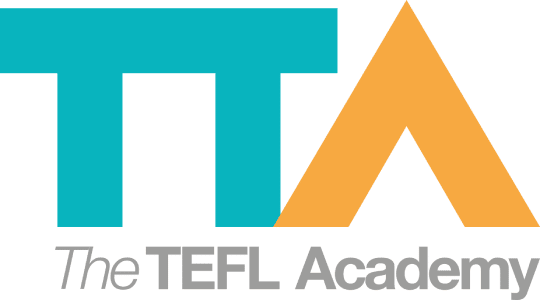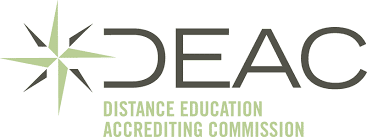International Women’s Day
Join a global community of over 200,000 TEFL teachers working throughout the world! Enrol me!
“The story of women’s struggle for equality belongs to no single feminist nor to any one organisation but to the collective efforts of all who care about human rights” – Gloria Steinem.
There are many reasons we should celebrate the women in our lives, and International Women’s Day is just one day we should be doing that.
When is International Women’s Day?
International Women’s Day is celebrated on March 8. It has been celebrated as a holiday by the United Nations every year since 1975, though its origins are from before then. The theme for International Women’s Day 2025 is “Accelerate action”.
International Women’s Day is a day to raise awareness of issues faced by women all over the world, as well as celebrate the many remarkable achievements of women over the years in society, economics, politics, culture – and education!
Celebrating women in education
As teachers, we understand the importance of teachers and educators in our world. That’s why we’re teachers! But particular women in history have made a huge difference to learners and education all over the world who are often overlooked.
Let’s look at the accomplishments of these women to understand even better why we need to celebrate them.
Malala Yousafzai
Malala is truly an inspiration.
Born in Pakistan in 1997, Malala was forced out of school when she was just 11, when the Taliban came into power. She spoke out publicly about the ban on girls in schools and, as a result, was shot in the head by a masked gunman. She recovered and continued her fight.
She started the Malala fund, a charity dedicated to giving every girl an opportunity to achieve the future she wants through education. In December 2014 she became the youngest-ever Nobel Laureate, being awarded the Nobel Peace Prize. She has since graduated from the University of Oxford and travels around the world championing girls’ rights to education.
View this post on Instagram
Maria Montessori
You might be familiar with the education system which bears her name, but you might not know how she started this global movement.
Working as a doctor in Italy in the late 1800s and early 1900s, Montessori worked with intellectually-challenged children, and developed a way of teaching which proved very successful. The Montessori system believes in the right of each child to be treated as an individual, encourages their drive to learn, and fosters the creative potential of children. In Montessori schools, students are encouraged to work on their own, in their own time, while the teacher acts more like a guide than a teacher.
She opened a children’s home for all children and continued educating them with her methods. The Montessori Method is now widely used around the world.

Septima Clark
Clark, also known as the “Mother of the Movement”, was a pioneer in grassroots citizenship education.
She worked as a teacher in the South of the United States in the mid-1900s and became active in the civil rights movement. She participated in the lawsuit which led to pay equity for black and white teachers in South Carolina, as well as conducting civil rights workshops when she wasn’t teaching. Clark believed that literacy and political empowerment are linked so she taught people basic literacy skills, the rights of U.S. citizens and how to fill out voter registration forms.
Rosa Parks attended one of her workshops before she launched the Montgomery bus boycott.
View this post on Instagram
Savitribai Phule
Phule is often referred to as the mother of Indian feminism.
In 1848, Phule became the first female teacher in India. She opened a school for girls and established a shelter for destitute women, widows and child brides. She worked tirelessly for equality in her country, and faced much discrimination for her efforts.
She was declared to be the best teacher in the state by the British government in 1852.
View this post on Instagram
Jane Elliot
Jane Elliot has one mission: one race.
She believes in exposing prejudice as an irrational system based on arbitrary factors. In 1968, Elliot devised the now-famous Blue Eyes/Brown Eyes experiment as an anti-racism exercise. In this experiment Elliot, a teacher of an all-white third grade class in the United States, wanted to show what discrimination is like.
She split her class into two groups: those with blue eyes and those with brown eyes. She told the students that studies have shown that people with brown eyes are smarter, more civilized and better people than those with blue eyes. She gave the brown-eyed students special privileges and treated them more favourably.
The results of the experiment were telling: the students started to internalise and accept the characteristics they had been assigned based on the arbitrary colour of their eyes. In other words, the brown-eyed students began to believe they were superior, while the blue-eyed students began to believe they were inferior – purely based on their eye colour!
To this day she continues to fight against racism and discrimination.
View this post on Instagram
How can we celebrate International Women’s Day in the classroom?
International Women’s Day is an important day to spend focusing on the achievements of women over time, the current gender inequality that is still present in all societies, and the future for women.
We’re not suggesting that you hold a march or demonstrate outside your school, but there are a number of activities you can include in your lesson in celebration.
Webquest
If you access to the Internet, organise a webquest for your students. Assign each student or pair of students a famous woman and give them time to research her and her life. They can then present this to the class. Examples of women are: Frida Kahlo, Rosa Parks, Emmeline Pankhurst, Serena Williams, Malala Yousafzai and Florence Nightingale.
Similarly, students could give a presentation of a remarkable woman from their country.
Information gap
Source biographies of women and print them out. Divide the readings so that each student in a pair has only certain information on the woman. Pairs must ask each other questions to find out all the information about the woman in question.
If gender roles were reversed
This is an activity for more Advanced and older students.
Ask your students to imagine what it would be like if gender roles were reversed in their communities. Use this to discuss the current situation women find themselves in every day and how your students could contribute to changing the status quo.
So while you should certainly take part in whatever International Women’s Day celebrations are taking part in your community, you can also take the opportunity to celebrate women in your EFL classroom.
But remember, this is not just a lesson plan for Women’s Day. It’s a call to incorporate women in the TEFL classroom and gender equality more into our everyday EFL lessons. Here’s how you can do that.
Avoid gender stereotyping
Sexism is rife, no matter where you were brought up. This means that you need to be very careful of sexism in your classroom, regardless of where you come from or where you are teaching. The first thing to think of is to prevent unconscious bias against women in your classroom. This means making sure women are equally represented. When discussing superheroes, go further than Superman. When talking about parenting, be sure to include fathers in the caregiving role. If you are looking at farmers or doctors or engineers, be sure to include pictures of women as well as men. If you are teaching children, encourage them to play against gender stereotypes, so give the girls cars and the boys prams to play with.
Update history
Often when we deal with historical figures, we end up discussing famous men, because, let’s face it, men have traditionally been given more airtime than women. When it comes to texts in our coursebooks, if we are talking about a woman it is usually Florence Nightingale or Margaret Thatcher or Britney Spears. Update your coursebooks by introducing your students to one of the many amazing but lesser-known women who have made a difference in the world – Malala Yousafzai, Sally Ride, Aung San Suu Kyi and Sheryl Sandberg.
Be upfront and open
At the same time, it’s good to be upfront and open about the historical issues surrounding women. While we have made a few steps towards solving these issues, there is still a long way to go. We need to be aware of the status quo and the effects of history so that we don’t perpetuate the problem. If your students are at an appropriate age and are open to discussing topical issues, bring in topics which are usually avoided in coursebooks, such as child brides, pay inequality, and gender-based violence, so that our students can become more aware of the issues relevant today.
Be proactive
As you can see, you may need to bring in outside materials and resources to your lessons to accomplish some of these aims. We are not saying that all ELT coursebooks are the problem – and they are certainly getting better – but many of them are outdated in their presentations. As a TEFL teacher you need to make a concerted effort to help equalize the airtime given in your classroom to make sure women are not marginalized or ignored.

Accreditation & Quality Assurance
The TEFL Academy was the world’s first TEFL course provider to receive official recognition from government regulated awarding bodies in both the USA and UK. This means when you graduate you’ll hold a globally recognised Level 3 (120hr) Certificate or Level 5 (168hr) Diploma, meaning you can find work anywhere and apply for jobs immediately.
 United Kingdom
UK
United Kingdom
UK












